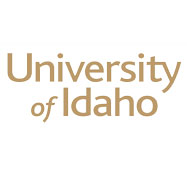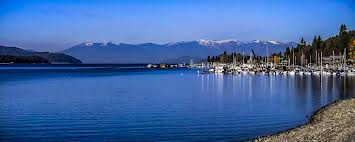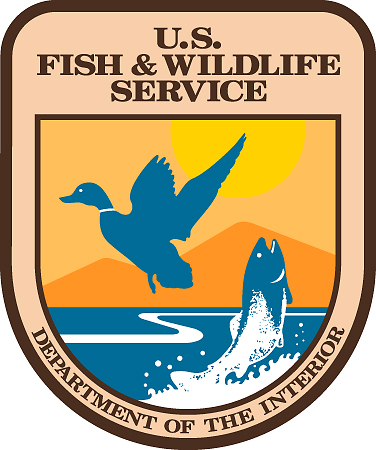Ellisport Bay of Lake Pend Oreille Asian Clam Infestation
Update: February 24, 2016 . The U of Idaho team will be returning to remove the barriers, and assess the effectiveness of the treatment. A small area less than 500 sq feet will be treated in the area for a short duration while lake water elevation remains low.
Barriers will remain for the summer, due to water level elevation. No risk as sodium hydroxide is neutralized. We will return in the late fall after draw down to assess treatment and remove barriers.
The Asian Clam Research team completed part two of our project to eradicate the invasive Asian clam population in Ellisport Bay, that occupies an area of approximately half an acre along the shore-line. Our treatment method includes the use of an EPDM rubber pond-liner barrier that cover small bags of sodium hydroxide in accordance with our EPA-approved research permit.
We are coordinating our efforts with local volunteers who are helping us monitor pH on a weekly interval. The pH around the barriers returns to near-normal pH one-week after sodium hydroxide treatment.
Photos from the barrier deployment installation will be up soon. See the team in action!
Excellent article published in the University of Idaho's News Outlet, The Argonaut. Check it out in the news section
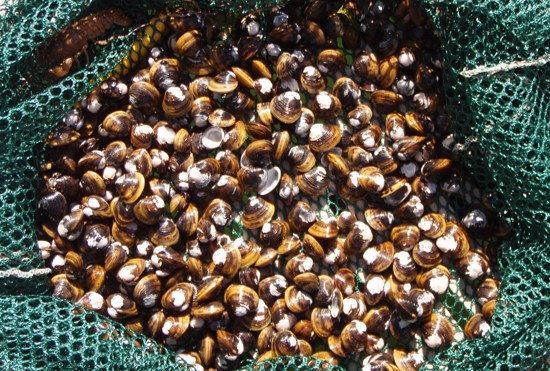
Asian Clams and shells removed from site
Notice - Water Use Restriction Area
Plan of Action-In response to the infestation of the Asian clam (Corbicula fluminea) in East Hope, the infested areas was covered with non-permeable rubber barriers
in the winter of 2015. will be sampled in November 2015. EPA-NPDES Pesticide General Permit IDG87AE24,
is used for these experimental treatments.
Households using water from the lake that are located up to 1/5 mile from the treated areas in the vicinity of East Hope should turn off Potable Water & irrigation intakes for a minimum of
30 days.
Full details of the Water Restrictions can be found here:
Ellisport Bay, Lake Pend Oreille area where the infestation was first discovered.
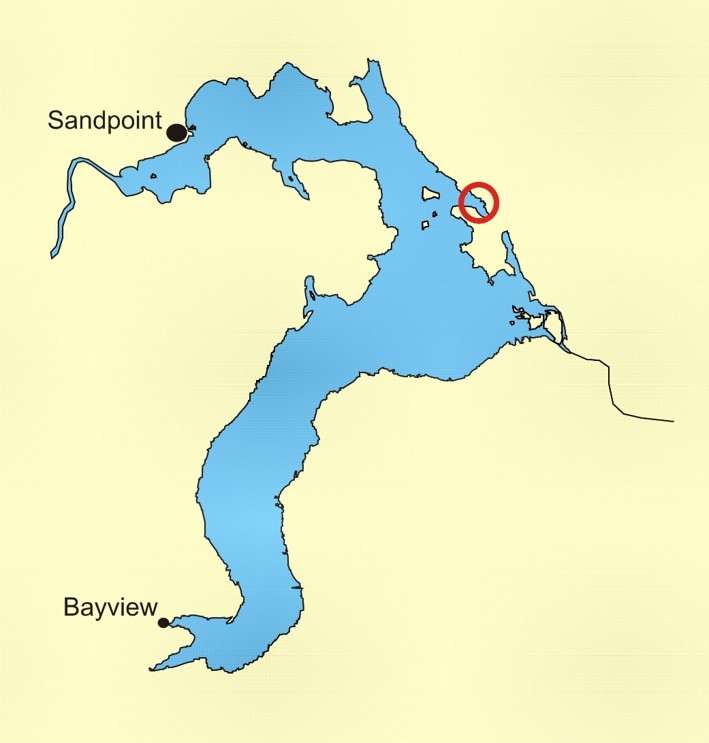
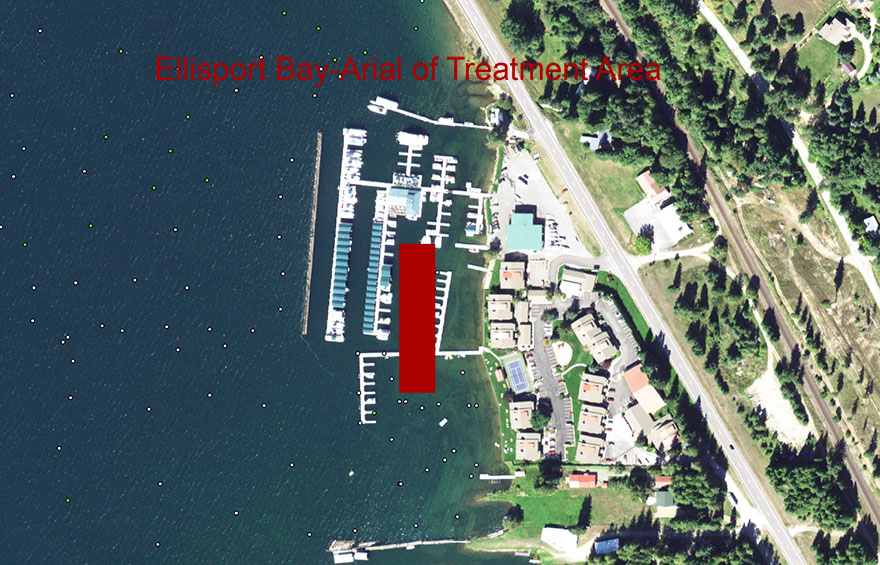
Treatment Method -
We have used benthic barriers to cover and smother the clam beds during the winter while the lake is at low elevation. The barriers are made of non-permeable rubber (EPDM pond liner) and will create low oxygen (anoxic) environments. Because Asian clams are extremely hardy, we also propose to place dry lye (sodium hydroxide -NaOH) pellets in bags under the non-permeable barriers to create a high pH environment in the substrate, which has been shown to be effective in killing Asian clams in lab and limited field trials.
Below is what the mats will look like once properly installed in the Lake Ellisport Bay Treatment Area. This image was from a similarly infested area the occured in Lake Tahoe.
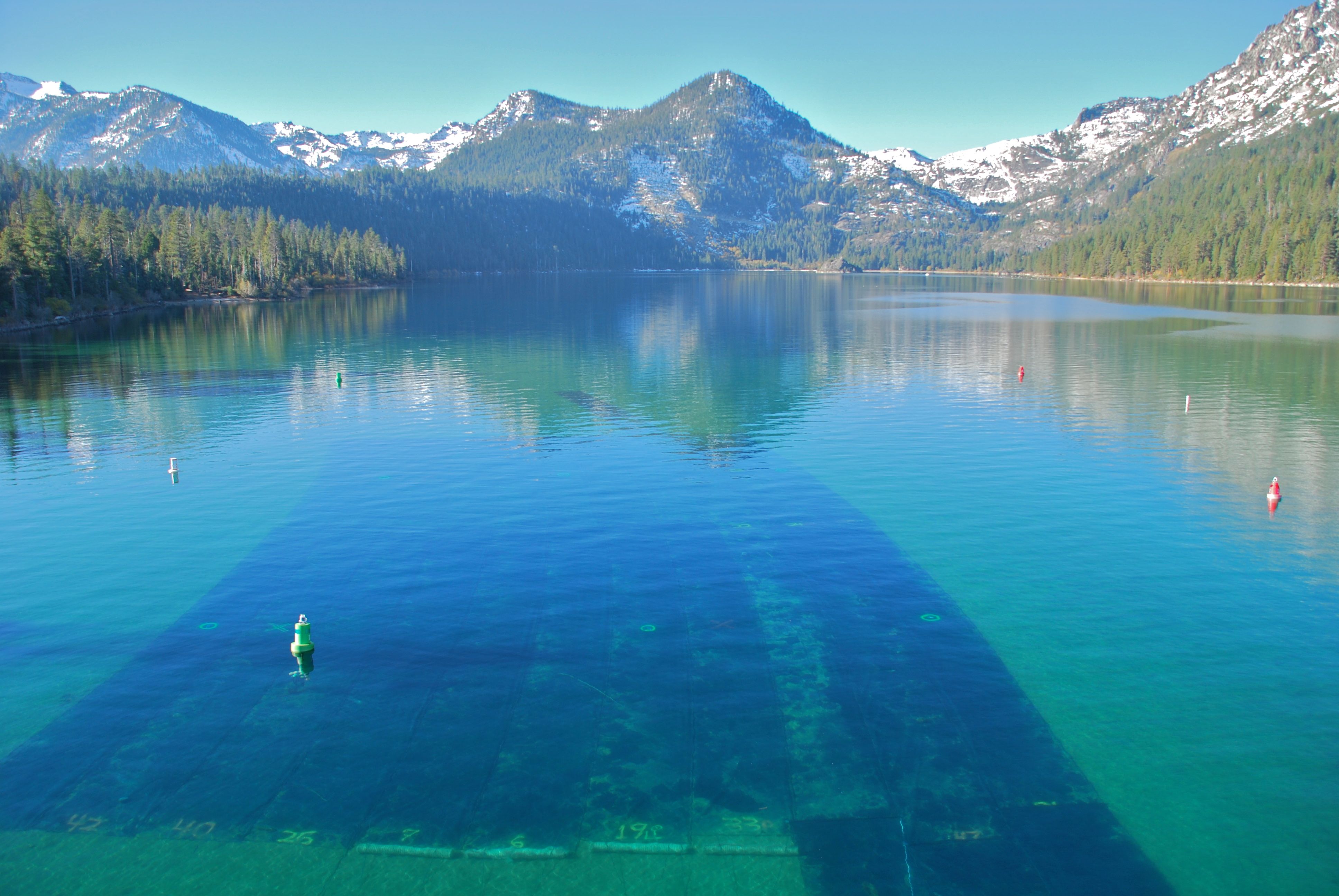
For a detailed overview of the treatment process click here
Contact us:
University of Idaho
Idaho Cooperative Fish & Wildlife Research Unit
College of Natural Resources
845 Perimeter Drive-MS 1141
Moscow, Idaho 83844-1141
For questions or comments please contact Joe Noonan our Web Master.
